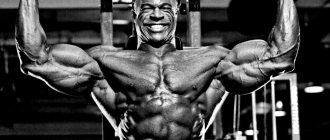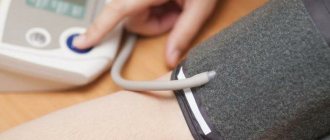Many people around the world live with hypertension. And if some are fixated on this and live only on medications, then others lead a full life! They try to eat healthy food, do gymnastics and get proper rest.
Yoga classes for hypertension help improve your general condition and stabilize blood pressure.
| Yoga exercises | |
| Relieves stress and anxiety, increases self-confidence | Requires constant training |
| Normalize blood pressure and improve heart function | Each stage of the technique will be more difficult than the previous one |
| Improve metabolism | Strict discipline |
| Increases body endurance, flexibility, strengthens all muscle groups | Rejection of bad habits |
The benefits of yoga for hypertension
Most doctors recommend their patients to do yoga along with medications. Despite the fact that hypertension is constantly rejuvenating, the majority of patients are still elderly people who are prohibited from intense physical activity. Ayurvedic people recommend yoga to lower blood pressure as one of the steps towards a healthy lifestyle. In addition to yoga techniques, they recommend proper nutrition, complete abstinence from alcohol and smoking, and spiritual enrichment. From an Ayurvedic point of view, hypertension is a condition that develops as a result of constant stress, as well as prolonged blockage of the gastrointestinal tract and arterial vessels.
The effect of asanas is not limited to normalizing blood pressure. Yoga therapy has a positive effect on the entire body, improving the functioning of all organs and systems. Some exercises are especially important for hypertensive patients, as they improve blood circulation and calm the central nervous system.
This practice is based on deep, calm breathing, which plays a key role in normalizing blood pressure.
Causes
High blood pressure occurs due to narrowing of the lumen of blood vessels, which forces the heart to work harder.
Hypertension can occur for the following reasons:
- overweight;
- poor nutrition;
- too intense or sudden physical activity;
- metabolic disorder;
- hormonal changes;
- smoking, drinking alcohol;
- disruption of the kidneys, liver, damage to the small intestine.
In addition, one of the main causes of hypertension is stress, during which a lot of adrenaline is produced.
Reference! Yoga helps with back problems and hemorrhoids, as well as headaches.
Causes of low blood pressure or hypotension may include:
- stress;
- hormonal disorders;
- sedentary lifestyle.
When should you not do yoga?
Yoga and hypertension can easily coexist. There are whole sets of exercises aimed at normalizing blood pressure. Yoga therapy is recommended for everyone, regardless of medical history and age. People with hypertension only need a set of special techniques. Such people should warn trainers about health problems and train in separate groups.
The world of yoga consists of a huge number of asanas, varying in intensity and effect on the human body. Not all of them are suitable for people with hypertension, as they can be harmful.
Patients who have recently suffered a serious illness or have undergone surgery in the recent past are selected for a special set of exercises. They are easy to perform and do not cause additional stress on the body. Particular attention is paid to patients with diseases of the joints and musculoskeletal system. Their training is carried out with the utmost care.
There are no hypertonic techniques that increase intracranial pressure and stimulate the nervous system.
These methods include:
- dynamic exercises that double load the body;
- lifting the legs while lying on your back;
- breathing techniques based on short and quick breaths (Bhastrika, Kapalbhati);
- long-term immobilization of the body;
- deep body bending.
Note! The inverted position is not recommended for people with hypertension, as it increases the risk of blood vessel rupture.
If you notice severe facial flushing or palpitations during yoga practice, lie on your back and begin moderate abdominal breathing. Inhalations and exhalations are smooth and deep.
People with hypertension are recommended to train according to an individual program, which can be adjusted depending on the results achieved.
Basic principles of yoga for high blood pressure
Yoga and blood pressure are compatible as long as the exercises are gentle. This yoga therapy is primarily aimed at relaxing the arm muscles and relieving tension in the spine. The thoracic region is also strengthened.
Yoga has developed a whole range of exercises that normalize the functioning of the nervous system.
These methods include:
- Brahmari breathes;
- Breathing techniques of Jogaji;
- Savasana is relaxing.
Therefore, the recommendations for hypertensive patients are as follows:
- Avoid holding your body in one position for a long time;
- stay in any position should gradually increase;
- perform only gentle poses.
People with hypertension measure their blood pressure before and after exercise. If your blood pressure rises after yoga, this means that the exercises included in the complex are incorrect or performed incorrectly. Then the trainer monitors the exercise tactics and changes the exercises if necessary.
Let's look at the main methods of lowering blood pressure:
- Kneel with your palms facing outward, resting on the floor. The body stretches smoothly, the forehead should touch the floor. Control your breathing.
- We do the next exercise while sitting on the floor in the lotus position. The back is straight. Breathing by alternately closing the nostrils with the index finger. First, close one nostril - inhale and exhale, then the second. Do 5 times in each nostril.
Child's Pose
fotolia
Important: not all asanas help lower blood pressure. Some, for example inverted ones, on the contrary, increase it. Therefore, it is important to avoid them. While doing the exercises, try to completely relax. Do asanas slowly and smoothly. Monitor your health: if it worsens, you should stop training immediately.
Techniques for treating hypertension
Yoga against hypertension is a whole set of exercises aimed at normalizing blood circulation and relaxing muscles.
All of them are easy to make and quite effective:
- Shavasana. The exercise consists of alternately raising your legs for two minutes. Inhalations and exhalations are calm, deep and even.
- I'll put up a dead man. The unattractive position is very effective for high blood pressure. The idea is to raise and lower your hands behind your head as you inhale, and return to the starting position as you exhale. The exercise is performed lying on your back, completely relaxed.
- Sit on your buttocks with your legs extended forward. As you exhale, reach your feet with your hands and clasp your toes. Try to pull your chest towards your feet as this will stretch your spine. This exercise is difficult to perform, so you may want to bend your knees slightly to achieve full alignment.
Breathing techniques
Breathing techniques are helpful even for very high blood pressure. People with hypertension are advised to alternate nostrils and breathe in and out slowly through the nose. A cycle of breathing practices normalizes blood pressure, relaxes and energizes.
Meditation
Meditation and breathing exercises are especially helpful for patients with high blood pressure. Patients feel much better after several rounds of exercise. It is expressed in the stabilization of blood pressure, a surge of strength and energy, a good and cheerful mood. However, you should always remember that physical exercise, even the smallest one, should be supervised by a physiotherapist. Especially exercises such as purna or shodhana.
Mudra that lowers blood pressure
Mudra that lowers blood pressure
Asanas
The body is as relaxed as possible, hands on the stomach. It is important to concentrate and imagine that your whole body is filled with energy and light. Then interlace all your fingers except the thumb and index finger. Interlace your little fingers first, then your ring fingers, and finally your middle fingers. The index finger of the right hand is straightened and spread to the side, and the index finger of the left hand is pressed against it. The thumb of the left hand is moved to the side. A few repetitions will relieve tension and give you a boost of energy.
- The following asanas are aimed at normalizing the nervous system and stabilizing blood pressure:
- Paschimottanasana. The essence of this asana is to smoothly bend forward. The simulator sits on the floor and straightens its legs. As you exhale, slowly reach your toes, hold in this position for 2-3 minutes, and then return to the starting position. Knees should be straight.
Some final tips
Do not practice one breathing technique for more than 4-5 minutes, and do not perform alternating breathing several times - this will cause tension, headaches and increase blood pressure - aggravating hypertension. It's akin to overeating. The food is good, but if you eat greedily, you will ruin your digestion.
In total, during that hour of yoga against high blood pressure (hypertension) and breathing practices should be done in moderation. This is the only way you can harmonize your body and achieve lower blood pressure (improved hypertension).
Yoga exercises for high blood pressure - hypertension - should also be carried out in accordance with how you feel. Do not do them “by force”; overexertion will adversely affect your blood pressure, increasing its levels!
Ayurveda recommendations
Halasana. Lie on your back with your legs straight and your arms extended along your body. As you exhale, gently pull your knees towards your stomach, separating your pelvis from the floor. We throw our legs with our hands behind our heads, our toes touch the floor. Hold this position for 3 minutes and then slowly return to the starting position. If you do not do the exercise right away, you can put a pillow behind your head and put your feet on it. This will make performing asanas a little easier.
Ayurveda is a technique based on medicinal herbs. Indian sages used it in ancient times to treat hypertension. However, it should be noted that this method is effective only in the initial stages of the disease.
Despite the effectiveness of Ayurvedic treatment, it remains too complex for many. To eliminate a disease, Ayurvedic doctors first determine its cause.
- First of all, the Ayurvedic technique is aimed at improving the health of the whole body, namely:
- normalization of the nervous system;
- removal of toxins from cardiac tubules;
balance the mind.
Exercises contraindicated for hypertension
Clinical studies have shown that people who do not eat meat rarely suffer from hypertension. Yogis believe that a diet based only on whole grains, fresh fruits and vegetables reduces blood pressure by 15 mmHg.
People suffering from hypertension perform reverse asanas with caution. Sharp bending of the body and stopping breathing are completely excluded. Such techniques worsen the well-being of hypertensive patients. Although many yoga therapists in their practice find that gentle inverted poses help lower blood pressure. But only when it comes to mild hypertension. Therefore, patients with high blood pressure are advised to gradually increase fixation and elevation of the lower extremities.
In any case, inverted poses must be handled with extreme caution. If after a cycle of such exercises patients feel well and their blood pressure does not fluctuate, this means that these exercises are useful and do not threaten health.
Reverse asanas should be completely avoided if hypertension is unstable and the patient has a history of stroke. The same goes for deep back curves. It is better to exclude them in patients with arterial hypertension.
Contraindications
Since inverted poses provoke an increase in blood pressure, they are not recommended for hypertensive patients.
Other dangerous practices should also be avoided:
- asanas that carry heavy cardio load;
- deflections;
- deep crunches;
- strength exercises with long-term fixation;
- delays;
- breathing exercise “kapalabhati”, aimed at cleansing the lungs;
- breathing exercise “bhastrika”, simulating the work of a blacksmith’s bellows.
While practicing yoga for hypertension and feeling well, you should not forget about regular medical examinations.
Controlling your blood pressure, cholesterol levels, and other risk factors can help you stay in good shape and reduce the likelihood of severe hypertension relapses. Author of the article Svetlana Anatolyevna Ivanova, general practitioner
Lifestyle of a person with hypertension according to yoga
Yoga is only beneficial when the exercises are natural. Excessive tension makes it impossible to concentrate, so gradually the body must relax more and more. Therefore, the main task of a person with hypertension is to normalize breathing and fully relax during yoga classes.
Hypertension is a dangerous disease that requires a complete overhaul of your lifestyle. Yoga is only a small part of what a person can do to maintain their health. First of all, you should review your diet and give up meat and animal products. If this is difficult to do, the first step is to reduce their consumption.
It is important for people with hypertension to lead a healthy lifestyle. Tobacco smoke and alcohol negatively affect the heart and blood vessels. If not, say that they are generally incompatible with hypertension.
People with arterial hypertension perform each workout under supervision. Independent exercises are allowed only when a person is fully aware of the specifics of his exercise and does not create unnecessary stress on the body.
Yoga to normalize blood pressure
Equally important are frequent walks in the fresh air, a positive attitude and spiritual harmony. This is the whole essence of yoga.
To stabilize blood pressure, perform a set of exercises developed by yoga therapists specifically for hypertensive patients. The main task in this case is to maintain a balance between exercise and overload. The second option is unacceptable in patients with hypertension.
There are many types of yoga, each with its own characteristics and set of exercises.
- People with hypertension can practice the following types of yoga:
- Jnana.
- Hatha.
- Bhakti.
- Rajah.










